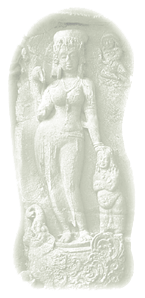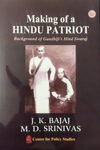PROFESSOR M. D. SRINIVAS
Professor M. D. Srinivas
Centre for Policy Studies
6, Balaiah Avenue, Luz , Mylapore, CHENNAI 600 004
Tel. 044- 24982003 , 24981585, 24980113, 28171745 (R)
E-mail:policy.cpsindia@gmail.com
Education and Employment
B.Sc. (Hons.) Physics, Bangalore University 1969; M.Sc. Physics, Bangalore University 1971;
Ph.D. in Theoretical Physics from University of Rochester, Rochester, NY, USA 1976
1976-85: Lecturer, Department of Theoretical Physics, University of Madras
1985-91: Reader, Department of Theoretical Physics, University of Madras
1991-96: Professor, Department of Theoretical Physics, University of Madras
Since 1996: Senior Fellow, Centre for Policy Studies, Chennai
Honorary Positions Held
1986-1990: Founder Director, PPST Foundation, Chennai
1992-1998: Member, Advisory Board on History of Science (Modern Period), INSA
1998-2000: Member, Indian National Commission for History of Science, INSA
1999-2002: Member, Central Sanskrit Board
Since 1998: Vice Chairman, Governing Body, Indian Institute of Advanced Study, Shimla
Since 1990: Founder Chairman, Centre for Policy Studies, Chennai
Areas of Specialization
Theoretical Physics (Conceptual and Mathematical Foundations of Quantum Mechanics)
History and Philosophy of Science, Scientific and Technological Tradition of India
Indian Society, Economy and Polity.
Books Published
1. J. K. Bajaj and M .D. Srinivas, Annam Bahu Kurvita: Recollecting the Indian Discipline of Growing and Sharing Food in Plenty, Centre for Policy Studies, Chennai, 1996 (also published in Hindi in 1996 and Tamil in 1998).
2. J. K. Bajaj and M. D. Srinivas, Timeless India Resurgent India: A Celebration of the Land and People of India, Centre for Policy Studies, Chennai , 2001.
3. M. D. Srinivas, Measurements and Quantum Probabilities, Universities Press, Hyderabad, 2001.
4. M. D. Srinivas, T. G. Paramasivam and T. Pushkala, Thirupporur and Vadakkuppattu: Eighteenth Century Locality Accounts, Centre for Policy Studies, Chennai, 2001 (also published in Tamil).
5. J. K. Bajaj and M. D. Srinivas, Restoring Abundance: Regeneration of Indian Agriculture to Ensure Food for All in Plenty, IIAS, Shimla, 2001.
6. M. S. Sriram, K. Ramasubramanian and M. D. Srinivas, Eds., 500 Years of Tantrasangraha: A Landmark in the History of Astronomy, IIAS, Shimla, 2002.
7. A. P. Joshi, M. D. Srinivas and J. K. Bajaj, Religious Demography of India, Centre for Policy Studies, Chennai, 2003.



